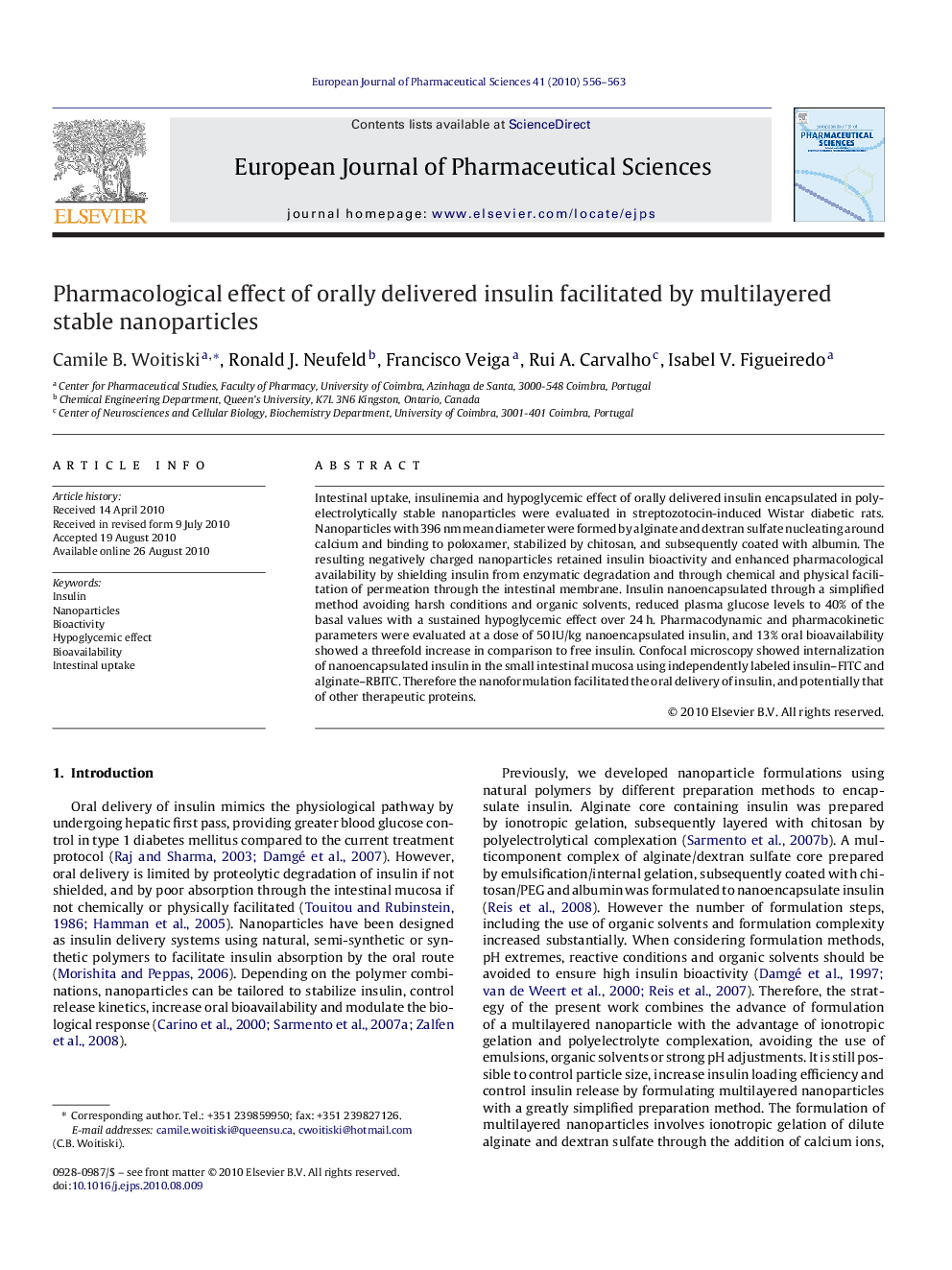| Article ID | Journal | Published Year | Pages | File Type |
|---|---|---|---|---|
| 2481390 | European Journal of Pharmaceutical Sciences | 2010 | 8 Pages |
Intestinal uptake, insulinemia and hypoglycemic effect of orally delivered insulin encapsulated in polyelectrolytically stable nanoparticles were evaluated in streptozotocin-induced Wistar diabetic rats. Nanoparticles with 396 nm mean diameter were formed by alginate and dextran sulfate nucleating around calcium and binding to poloxamer, stabilized by chitosan, and subsequently coated with albumin. The resulting negatively charged nanoparticles retained insulin bioactivity and enhanced pharmacological availability by shielding insulin from enzymatic degradation and through chemical and physical facilitation of permeation through the intestinal membrane. Insulin nanoencapsulated through a simplified method avoiding harsh conditions and organic solvents, reduced plasma glucose levels to 40% of the basal values with a sustained hypoglycemic effect over 24 h. Pharmacodynamic and pharmacokinetic parameters were evaluated at a dose of 50 IU/kg nanoencapsulated insulin, and 13% oral bioavailability showed a threefold increase in comparison to free insulin. Confocal microscopy showed internalization of nanoencapsulated insulin in the small intestinal mucosa using independently labeled insulin–FITC and alginate–RBITC. Therefore the nanoformulation facilitated the oral delivery of insulin, and potentially that of other therapeutic proteins.
